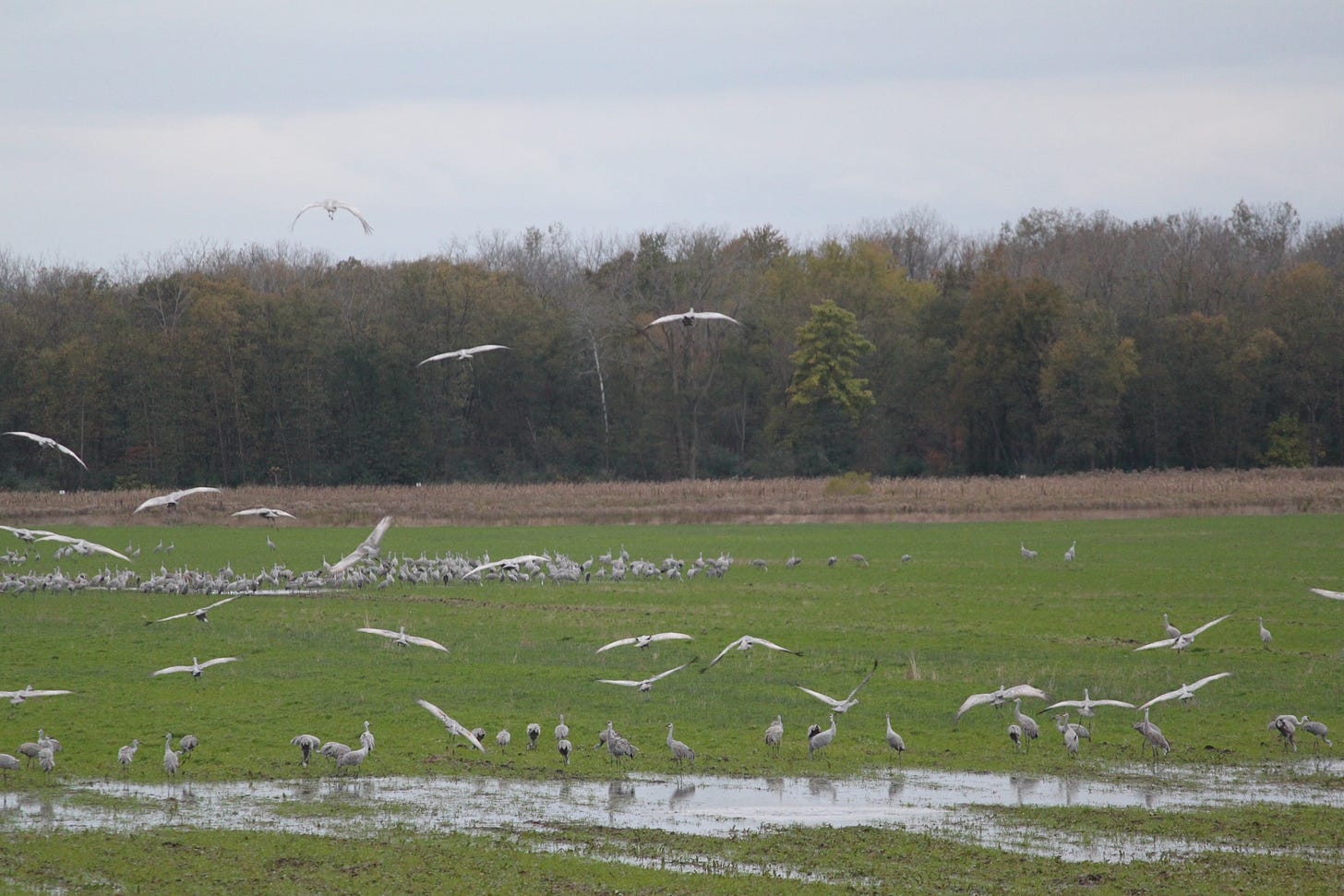20,000 Sandhill Cranes Are About to Arrive Just South of Chicago
By Georgie Lellman
This Week in Birding Contributor
Jasper-Pulaski Fish and Wildlife Area in northern Indiana is an extremely important staging area for eastern populations of sandhill cranes during their fall migration. The birds can be seen throughout the fall season, peaking at an incredible sight of around 20,000 cranes in late November and early December.
“The cranes start coming in as it gets dark,” says Stephanie Beilke, Conservation Science Manager at Audubon Great Lakes. “The numbers keep building and building. We watch as flock after flock moves into the site, calling to each other. The sound of hundreds of cranes is overwhelming and beautiful.”
How did this magnificent phenomenon come about?
Jasper-Pulaski became a preserve in the 1930s. It was not until the 1960s that the preserve became popular with the cranes, attracting up to 1,000 cranes during the 1960 migration season, according to Allysin-Marie Gillet, an Indiana State Ornithologist. The management of Canada geese at Jasper-Pulaski throughout the 1960s played a large role in this increase over the course of the decade, as it created more available habitat at the site. Beilke remarks that an increase of agricultural production in the region over the past century has created open habitat for the cranes to utilize, where they previously would have been forced to stop over farther south in Indiana and Illinois where naturally open plains exist.
Today, Jasper-Pulaski Fish and Wildlife Area uniquely offers preserved land amid vast farmed fields. This location enables cranes to feed on waste grains from the harvest in nearby fields during the daytime and return to the preserve to roost at night. Moreover, the openness of the area allows the congregated masses of birds to spot predators from a distance, making Jasper-Pulaski a safe roosting spot.
These characteristics create an ideal pitstop for “a significant portion of the region’s [sandhill crane] populations” on their migration from Minnesota, Wisconsin, and central Canada to wintering areas in southern Georgia and Florida, characteristics that are not found at other preserves across the Midwest. This current combination of food availability, space, and safety keeps the cranes returning year after year.
While Jasper-Pulaski has seen a steady population of sandhill cranes over the last two decades, new changes to their dynamics have been observed in recent years due to climate change and warming winters. Some cranes have begun to remain at Jasper-Pulaski through the winter because of a decrease in the frequency of freezes and snowfalls, which previously prevented the cranes from accessing waste grains and invertebrates to feed on during those winter months, Gillet notes. With these changes, future impacts on migration patterns are unknown.
Dave Fronczak, a wildlife biologist with the U.S. Fish and Wildlife Service who has extensively studied the cranes’ migration patterns, recommends witnessing the incredible migration and the gregarious cranes this November, while the migration maintains its current pattern and the number of birds reaches its peak.
Says Fronczak, “You will notice the sound before you really witness the sight.”
Georgie Lellman is a recent graduate of Kenyon College. She is interested in environmental law and passionate about wildlife issues.
Sources:
Castrale and Bergens, “Status of Sandhill Cranes in Indiana.” Indiana Department of Fish and Wildlife.
Fronczak et al., 2017, “Distribution and Migration Chronology of Eastern Population Sandhill Cranes.” The Journal of Wildlife Management.



